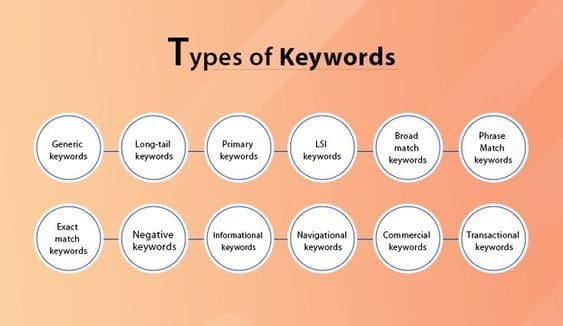Table of Contents
Proactive negative keyword research management is essential for shielding your campaigns from irrelevant traffic and maximizing advertising ROI. Conducting comprehensive keyword research is the foundation of this approach. Utilize tools like Google Keyword Planner to identify high-volume terms relevant to your business. Analyze campaign data to pinpoint keywords generating irrelevant clicks or impressions. Organize negative keywords into logical segments based on campaign objectives or audience segments. Regularly review and update your negative keyword lists to reflect evolving search trends and user behavior. Monitoring competitor campaigns can also provide valuable insights into potential negative keywords.
Leverage keyword-research tools to uncover new opportunities and refine your strategy accordingly. Apply different match types to negative keywords for precise targeting, ensuring you exclude irrelevant traffic while capturing relevant searches. Creating comprehensive lists of negative keywords organized by theme or category streamlines management. Continuously monitor search query reports to identify new negative keyword opportunities and optimize your strategy based on performance data. By integrating keyword-research into your negative keyword management strategy, you can effectively shield your campaigns from irrelevant traffic and improve overall campaign performance.
Conduct Comprehensive Keyword Research Using Keyword Search:
To conduct thorough keyword-research, you’ll need to leverage keyword-search tools and strategies tailored to your business or niche. Here’s a step-by-step guide to help you uncover valuable keywords:

Utilize Keyword Research Tools: Start by using keyword-search tools like Google Keyword Planner, SEMrush, or Ahrefs. These tools provide insights into search volume, competition, and keyword variations relevant to your business.
Enter Broad Terms: Begin by entering broad terms related to your products, services, or industry into the keyword search tool. This will generate a list of keyword suggestions to explore.
Review Suggestions: Carefully review the generated keyword suggestions, paying attention to search volume and relevance to your target audience. Look for long-tail keywords and variations that align closely with your offerings.
Analyze Competitor Keywords: Study competitor websites and industry publications to identify additional keywords they may be targeting. This can provide valuable insights into trending keywords and gaps in your own keyword strategy.
Incorporate Modifiers: Incorporate modifiers such as location-based keywords or product-specific terms to refine your keyword list further. This can help you target specific audience segments and improve your search visibility.
Group Keywords: Group related keywords into themes or categories to streamline your research process. This organization will make it easier to manage and prioritize your keyword list.
Continuous Refinement: Continuously refine your keyword list based on performance data and evolving search trends. Regularly monitor changes in search volume and competition to stay ahead of the curve.
By following these steps and leveraging keyword search tools effectively, you can conduct comprehensive keyword research to optimize your website content, advertising campaigns, and overall digital marketing strategy.
Analyzing Campaign Data for Negative Keyword Optimization
Analyzing campaign data, especially in digital marketing, is essential for optimizing performance and maximizing ROI. When examining campaign data, one crucial aspect to consider is the presence of negative keywords.

Negative keywords are terms or phrases that you explicitly exclude from your campaigns to prevent your ads from appearing for irrelevant searches. By identifying and analyzing negative keywords in campaign data, marketers can refine targeting, improve ad relevance, and reduce wasted ad spend.
During data analysis, it’s essential to review which search terms triggered your ads and assess their relevance to your campaign objectives. Identify any irrelevant or non-converting search queries that consumed ad budget without delivering desired results. These are potential negative keywords.
By adding these negative keywords to your campaign, you can refine targeting and ensure that your ads are shown to the most relevant audience. Additionally, negative keyword analysis can uncover broader trends or themes indicating areas for further optimization or content refinement.
Continuously monitoring and adjusting negative keywords based on campaign performance data is crucial for maintaining campaign effectiveness and driving better results over time.
Segmenting Negative Keywords: Enhancing Campaign Precision with Keyword Research
Segmenting negative-keywords is a vital step in refining your advertising campaigns and ensuring they reach the right audience. Start by conducting comprehensive keyword research to identify relevant terms and themes related to your business or niche. Once you have a robust list of negative keywords, it’s time to segment them strategically.

Campaign Objectives: Segment negative-keywords based on your campaign objectives. For example, separate keywords related to brand awareness campaigns from those focused on driving conversions.
Audience Segments: Consider segmenting negative keywords according to different audience segments. Tailor your negative keyword lists to specific demographics, interests, or geographic locations to ensure your ads are targeting the most relevant audience.
Product Categories: If your business offers multiple products or services, segment negative keywords by product categories. This allows you to fine-tune your targeting and avoid wasting ad spend on irrelevant searches.
Match Types: Segment negative keywords based on match types (broad, phrase, exact) to control the level of exclusion. Use broad match for general terms and exact match for precise targeting.
By segmenting negative keywords effectively, you can optimize your campaigns for precision and relevance, ensuring your ads are seen by the right audience at the right time.
Regular Review and Update of Negative Keyword Lists: Enhancing Campaign Performance
Segmenting negative-keywords is a vital step in refining your advertising campaigns and ensuring they reach the right audience. Start by conducting comprehensive keyword-research to identify relevant terms and themes related to your business or niche. Once you have a robust list of negative keywords, it’s time to segment them strategically.

Campaign Objectives: Segment negative-keywords based on your campaign objectives. For example, separate keywords related to brand awareness campaigns from those focused on driving conversions.
Audience Segments: Consider segmenting negative keywords according to different audience segments. Tailor your negative keyword lists to specific demographics, interests, or geographic locations to ensure your ads are targeting the most relevant audience.
Product Categories: If your business offers multiple products or services, segment negative-keywords by product categories. This allows you to fine-tune your targeting and avoid wasting ad spend on irrelevant searches.
Match Types: Segment negative-keywords based on match types (broad, phrase, exact) to control the level of exclusion. Use broad match for general terms and exact match for precise targeting.
By segmenting negative keywords effectively, you can optimize your campaigns for precision and relevance, ensuring your ads are seen by the right audience at the right time.
Monitoring Competitor Campaigns: Leveraging Insights to Enhance Your Strategy
Regularly monitoring competitor campaigns is a crucial aspect of staying ahead in the digital landscape. By keeping a close eye on your competitors’ activities, you can gain valuable insights into their strategies, messaging, and performance. Here’s how to effectively monitor competitor campaigns with a focus on search:

Keyword Analysis: Track the keywords your competitors are targeting in their ads and organic search efforts. Identify high-value keywords they’re ranking for or bidding on to gain insights into market trends and opportunities.
Ad Copy and Messaging: Analyze the ad copy and messaging used by competitors to understand their value propositions and offers. Identify any unique selling points or promotions they’re highlighting to inform your own messaging strategy.
Ad Placement and Positioning: Monitor where and when your competitors’ ads are appearing in search results. Pay attention to their ad positioning and frequency to gauge their investment and visibility in the market.
Performance Metrics: Evaluate the performance of competitor campaigns by analyzing metrics like click-through rates, conversion rates, and ad spend. Identify areas where competitors are excelling or underperforming to benchmark your own performance and inform strategic decisions.
Regularly monitoring competitor campaigns provides valuable insights that can help you refine your own strategy, optimize targeting, and stay competitive in the ever-evolving search landscape.
Utilize Keyword Research Tools:
Keyword research tools are invaluable for effective keyword management, enabling marketers to discover, analyze, and optimize keywords for their campaigns. Here’s how to utilize keyword research tools effectively:

Keyword Discovery: Start by using keyword research tools like Google Keyword Planner, SEMrush, or Ahrefs to discover relevant keywords related to your industry, products, or services. Enter seed keywords or topics, and explore suggested keywords, search volumes, and competition levels.
Keyword Analysis: Analyze the competitiveness and search volumes of identified keywords to prioritize them effectively. Look for high-volume keywords with moderate to low competition for optimal targeting. Consider long-tail keywords for niche audiences and opportunities to capture specific search queries.
Keyword Expansion: Expand your keyword list by exploring related terms, synonyms, and variations using keyword research tools. Identify additional keywords that align with your campaign objectives and audience intent.
Competitor Analysis: Utilize keyword research tools to analyze competitors’ keyword strategies. Identify keywords they’re targeting in their campaigns and assess their performance metrics. This insight can inform your own keyword selection and competitive positioning.
Keyword Grouping: Organize keywords into thematic groups or ad groups based on relevance and search intent. Grouping similar keywords together enables more targeted ad campaigns and ad copy tailored to specific audience segments.
Negative Keyword Identification: Use keyword research tools to identify negative keywords—terms you want to exclude from your campaigns to prevent irrelevant traffic. Analyze search queries triggering your ads and identify irrelevant terms to add to your negative keyword list.
Monitoring and Optimization: Continuously monitor keyword performance metrics like click-through rates, conversion rates, and cost-per-click. Optimize keyword bids, ad copy, and landing pages based on performance data to improve campaign effectiveness and ROI.
By leveraging keyword research tools effectively, marketers can streamline keyword management, optimize targeting, and drive better results from their digital marketing campaigns.
Leveraging Match Types for Effective Negative Keyword Management with Keyword Search
Utilizing match types is a powerful strategy in negative keyword management, ensuring precise targeting and improved campaign performance. Here’s how to leverage match types effectively:

Broad Match: Broad match negative keywords allow your ads to be excluded from a wide range of search queries. Use broad match for general terms that are irrelevant to your business. For example, if your business sells shoes, you might use “free shoes” as a broad match negative keyword to exclude searches for free footwear.
Phrase Match: Phrase match negative keywords exclude your ads from searches that contain the specific phrase, along with additional words before or after it. This offers more control than broad match while still capturing variations. For instance, “cheap shoes” as a phrase match negative keyword would exclude searches like “cheap shoes online” or “cheap shoes for sale.”
Exact Match: Exact match negative keywords are the most precise, excluding your ads only from searches that exactly match the specified keyword. This ensures your ads are not triggered by any variations of the keyword. For example, “discount shoes” as an exact match negative keyword would only exclude searches for “discount shoes” and nothing else.
By leveraging match types effectively in your negative keyword strategy, you can fine-tune your targeting and prevent irrelevant traffic, ultimately improving the performance of your advertising campaigns.
Crafting Comprehensive Lists for Effective Keyword Management
Creating comprehensive lists of keywords is essential for optimizing your advertising campaigns and maximizing their performance. Here’s how to develop thorough keyword lists:

Initial Brainstorming: Start by brainstorming a broad list of keywords relevant to your business, products, or services. Include variations, synonyms, and long-tail keywords to capture a diverse range of search queries.
Keyword Research Tools: To increase the size of your list, make use of keyword research tools like Ahrefs, SEMrush, and Google Keyword Planner. By giving you information about search volume, competitiveness, and similar terms, these tools can help you find untapped markets.
Competitor Analysis: Analyze competitor websites and advertising campaigns to identify additional keywords they may be targeting. This can provide valuable insights into trending keywords and gaps in your own keyword strategy.
Segmentation: Organize your keyword list into logical segments based on campaign objectives, audience segments, or product categories. This segmentation makes it easier to manage and prioritize your keyword lists effectively.
Continuous Refinement: Regularly review and update your keyword lists based on performance data and evolving search trends. This ensures your keyword strategy remains current and aligned with your business goals.
By creating comprehensive lists of keywords and continuously refining them through keyword management practices, you can optimize your advertising campaigns for maximum effectiveness and reach your target audience more efficiently.
Monitor Search Query Reports:
Monitoring search query reports is an indispensable practice for optimizing advertising campaigns and refining keyword targeting strategies. These reports provide valuable insights into the specific terms and phrases that trigger your ads, enabling you to identify relevant keywords, uncover new opportunities, and refine negative keyword lists.
Regularly reviewing search query reports allows you to gain a deeper understanding of user behavior and search intent. By identifying patterns in search queries, you can pinpoint high-performing keywords that align with your campaign objectives and audience preferences. Simultaneously, you can flag irrelevant or low-performing keywords that may be draining your ad budget and adjust your targeting strategies accordingly.
Continuously analyzing search query reports helps you stay ahead of evolving search trends. It enables you to refine your keyword lists, optimize bidding strategies, and tailor ad content to better meet user needs. By leveraging search query reports effectively, you can fine-tune your targeting efforts, ensure your ads reach the right audience with the most relevant messaging, and maximize the overall performance and ROI of your advertising campaigns.

Continuously Optimize: Enhancing Campaign Effectiveness Over Time
Continuous optimization is a fundamental aspect of managing successful advertising campaigns. It involves ongoing analysis, refinement, and adjustment of various campaign elements to improve performance and maximize return on investment (ROI). Here’s how to continuously optimize your campaigns:
Performance Monitoring: Regularly monitor key metrics such as click-through rates, conversion rates, and cost per acquisition to identify areas for improvement.
A/B Testing: Experiment with different ad creatives, targeting options, and bidding strategies through A/B testing. This allows you to identify what resonates best with your audience and optimize accordingly.
Keyword Refinement: Continuously review and refine your keyword lists based on performance data and evolving search trends. Add new high-performing keywords, exclude irrelevant ones, and adjust match types as needed.
Ad Copy Optimization: Test different ad copy variations to determine which messages drive the highest engagement and conversions. Tailor your messaging to address customer pain points and highlight unique selling propositions.
Landing Page Optimization: Optimize your landing pages for better conversion rates by improving page load times, enhancing usability, and aligning content with ad messaging.
Budget Allocation: Adjust your budget allocation based on performance insights to prioritize top-performing campaigns and maximize ROI.
By continuously optimizing your campaigns, you can stay ahead of the competition, improve campaign effectiveness over time, and drive better results for your business.
Conclusion:
In conclusion, effective advertising campaign management requires continuous optimization and refinement to achieve optimal results. By implementing proactive strategies such as thorough keyword research, segmentation of negative keywords, and leveraging match types, advertisers can enhance targeting precision and shield campaigns from irrelevant traffic. Additionally, monitoring search query reports provides valuable insights into user behavior, enabling advertisers to identify high-performing keywords and refine targeting strategies accordingly. Continuous optimization involves regularly monitoring campaign performance, conducting A/B testing, refining keyword lists, optimizing ad copy and landing pages, and adjusting budget allocation. Through these iterative processes, advertisers can improve ad relevance, maximize engagement, and drive better outcomes for their campaigns.
Furthermore, ongoing optimization ensures campaigns remain aligned with evolving search trends and user preferences, allowing advertisers to adapt and stay competitive in dynamic market environments. By prioritizing data-driven decision-making and embracing a culture of continuous improvement, advertisers can unlock the full potential of their advertising campaigns and achieve long-term success. Ultimately, the journey towards campaign optimization is an ongoing one, but the rewards of enhanced performance, increased ROI, and greater customer engagement make it well worth the effort.



Leave a Reply